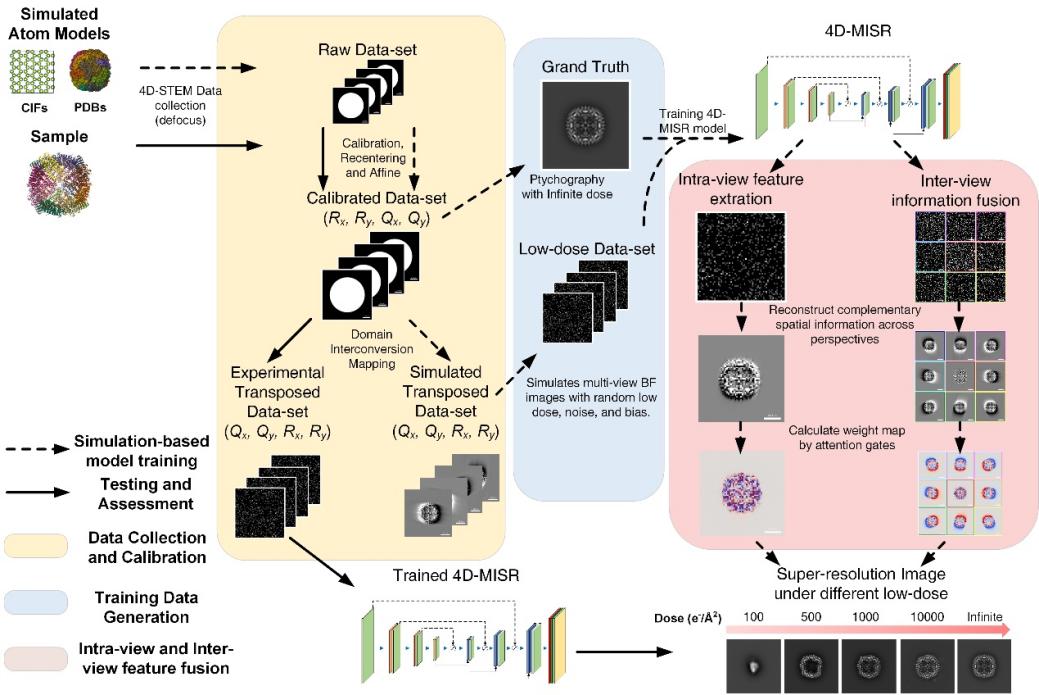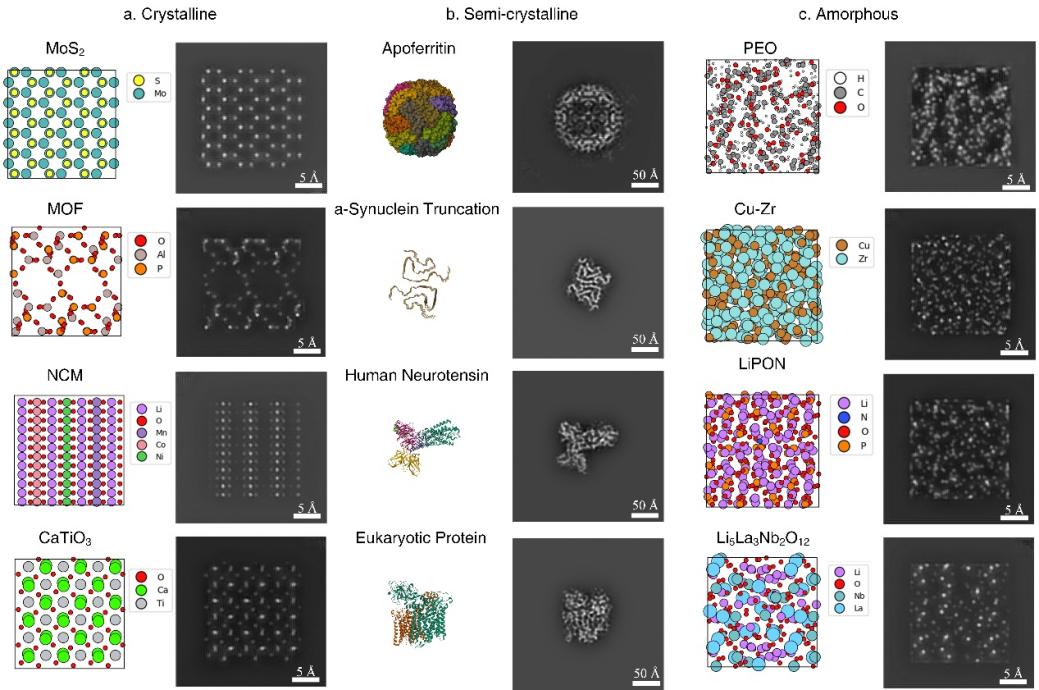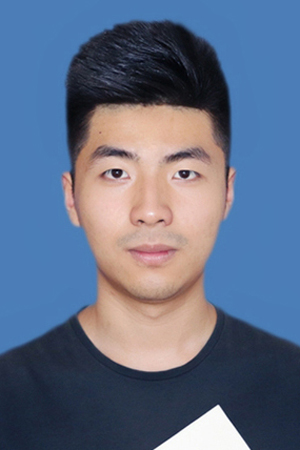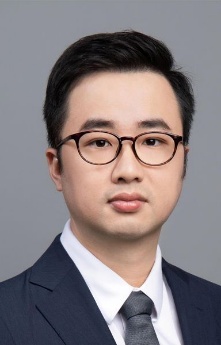GIFT Yujun Xie team publishes paper in the first issue of AI for Science: 4D-MISR: a unified model for low-dose super-resolution imaging via feature fusion
A research team from the Future Battery Research Center at GIFT has published a paper in the first issue of AI for Science, titled "4D-MISR: a unified model for low-dose super-resolution imaging via feature fusion". The study introduces a Multiple-Image Super-Resolution (MISR) method from remote sensing into electron microscope. It primarily explores an attention mechanism-based multi-scale feature fusion network, which can effectively recover high-frequency structural details under low electron doses-achieving clarity near that of high-dose conditions. This offers a promising low-dose pathway for atomic-scale imaging of electron-beam-sensitive materials. The first author is Zifei Wang, a 2023 master's student at GIFT.

Atomic-resolution imaging of beam-sensitive materials has long been constrained by the “dose-resolution” trade-off: higher doses improve signal-to-noise but cause radiation damage, while lower doses preserve structure but result in significant noise and loss of high-frequency information. Traditional retrieval methods are also prone to noise amplification or non-physical solutions. Although methods such as cryo-cooling, low acceleration voltages, and high-efficiency detectors have extended the usable dose window, they often introduce experimental complexity and offer limited gains for thick or multiple-scattering samples. The development of diffraction spot and angular multi-modal signals provides new pathways for improving information utilization efficiency. However, signals remain susceptible to being eroded by noise and phase aliasing under extremely low doses, with light elements, or where multiple scattering is significant, leading to limited resolution and robustness. Therefore, there is an urgent need to balance signal utilization efficiency, physical priors, and robustness to noise/multiple scattering to expand the resolvable frequency band in low-dose imaging and enhance the structural interpretability of fragile samples.
To address this challenge, the research introduces for the first time the remote sensing concept of Multi-Image Super-Resolution (MISR) to electron microscopy, proposing a unified "4D-MISR" framework. In satellite imaging, MISR synthesizes a high-resolution image from multiple low-resolution observation frames with sub-pixel offsets. The paper adapted this concept for 4D-STEM: generate multi-perspective Virtual Bright Field (VBF) images by leveraging the diversity of probe scan positions and the redundancy between diffraction frames. Combined with deep learning for cross-perspective feature fusion, this approach breaks through the resolution limitations imposed by low electron doses. Unlike ptychography, which relies entirely on phase retrieval, 4D-MISR changes the problem into a data-driven super-resolution reconstruction task, fully leveraging the joint advantages of multi-perspective redundancy and deep learning feature extraction, thus opening a new direction for dose-limited atomic-scale imaging.
The 4D-MISR framework was validated across crystalline, semi-crystalline, and amorphous samples. For crystalline materials like MoS2 and CaTiO3, the model clearly revealed periodic atomic structures. For semi-crystalline biomolecules such as ferritin shells and neuropeptides, the model recovered overall configurations and domain-level organization, even in the presence of strong local heterogeneity. In amorphous materials like Cu-Zr metallic glass and polyethylene oxide, the results accurately preserved disordered characteristics without introducing artifacts. This method is effective not only in ordered systems but also applicable to flexible polymers, complex biomolecules, and even fully disordered materials, demonstrating broad universality. Notably, 4D-MISR achieved comparable or superior resolution while reducing the electron dose by approximately 60%, restoring high-frequency information typically lost in conventional retrieval phase, and significantly improving spatial resolution and Contrast-to-Noise Ratio (CNR). As the method works with standard 4D-STEM data and requires no hardware modification, it offers a practical and feasible solution for expanding the applications of electron microscopy in both materials and life sciences.

Illustration 1: The integrated workflow combines atomic model data generation, calibration of experimental data, cross-domain mapping transformation as well as the 4D-MISR deep learning model. This model achieves high-fidelity super-resolution image reconstruction under varying electron dose conditions through intra-view feature extraction and inter-view information fusion.

Illustration 2: Reconstruction results under low electron dose for (a) crystalline (MoS2, MOF, NCM, CaTiO3), (b) semi-crystalline (ferritin, α-synuclein, neuropeptide, eukaryotic protein), and (c) amorphous (PEO, Cu-Zr, LiPON, Li5La3Nb2O12) samples.
Author Profile

Zifei Wang is a class of 2023 master's student at Global Institute of Future Technology. He has received the National Gold Award in the China International College Students' Innovation Competition and holds one software copyright and one invention patent. His research focuses on AI-based image processing and electron microscopy. During the SJTU-CATL joint training program, he contributed to battery diagnostics software and identified key challenges in low-dose atomic-scale imaging. Inspired by multi-image super-resolution in remote sensing, he proposed the 4D-MISR framework, which effectively restores high-frequency details at low doses across diverse material systems.

Yujun Xie is an Associate Professor and Doctoral Supervisor at Global Institute of Future Technology, and a recipient of the National Science Fund for Excellent Young Scientists (Overseas). He holds a Ph.D. from Yale University and conducted postdoctoral research at UC Berkeley and Lawrence Berkeley National Laboratory. His work focuses on AI-based transmission electron microscopy. He has published over 60 papers on top-tier journals including Nature Communications and Science Advances, and holds three international patents. His honors include Outstanding Young Scientist Award in Amorphous Alloys from the Chinese Materials Research Society, the Gold Award at the China International Innovation Competition, the Materials Research Society Graduate Student Gold Award (USA), the National Award for Outstanding Self-Financed Students Abroad from the China Scholarship Council, the Ludo Frevel Crystallography Scholarship, and he was named to the Forbes China 100 Young Overseas Returnees list.




